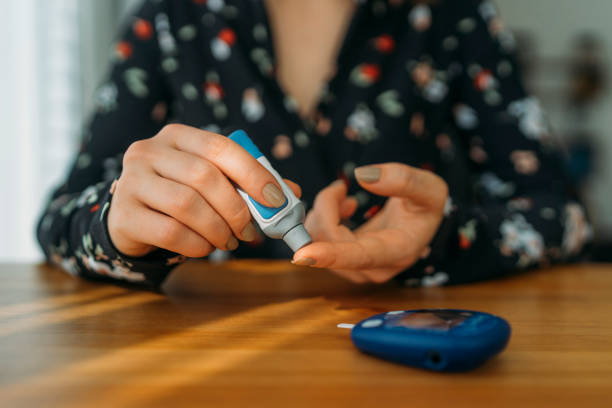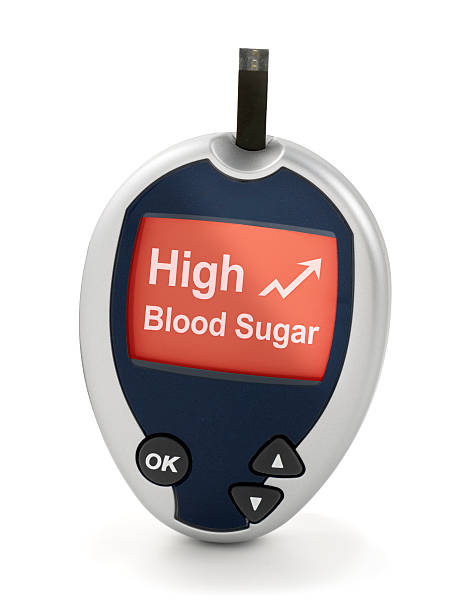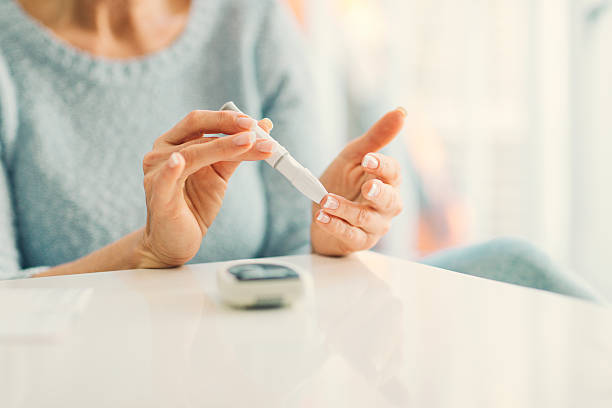Diabetes Mellitus is a chronic disease brought up by the limited insulin production in the pancreas. It can also be when the body cannot well utilize the insulin being produced.
As a result, there is an increased amount of glucose in the blood, also known as hyperglycemia. Additionally, it has a characterization of having disturbance in protein, carbohydrates, and fat metabolism. (Blair, 2016)
The high concentration of hyperglycemia affects most body tissues and causes various complications in many organ systems.

Read our popular article " Nursing Diagnosis For Acute Pain"
Some of the organ systems involved include the nerves, eyes, blood vessels, and kidneys. It may be a generational disease or may be brought about by natural causes.
Diabetes Mellitus Type 2
It has various classifications. Firstly, type one diabetes has a characterization of the destruction of pancreatic beta cells.
The second classification is type two diabetes, which characterizes the resistance of insulin and abnormal secretion of insulin.
Gestational diabetes mellitus is another type described as an expectant lady notices a glucose resistance amount during pregnancy. (Baz, 2016)
Prediabetes
Another type is Prediabetes, which is new in the field of medicine.
It involves a stage of metabolism that lies between normal glucose homeostasis and diabetes.
The last type is diabetes mellitus that is brought about by other conditions.
It may be developed by causes such as abnormalities of hormones, pancreatic diseases, and medication.

Nursing Diagnosis of Diabetes Mellitus
Nurses’ principal diagnosis to diabetic patients is treating and normalizing blood sugar levels in the body and decreasing complications by replacing insulin, exercise, and having a balanced diet.
The nurse educates the patient intensely about the condition by mentioning its effects on the patient’s body and overcoming it.
For the patient to get a quick recovery, the nurse should insist on taking eth prescribed medication according to its time.

Educate the patient on the abilities, needs, and development stages of the condition. Also, press on the importance of glucose control for the sake of long-term health.
Role of Diabetes Management
The primary role of diabetes management is stabilizing the activity of insulin and the level of blood glucose. It is to prevent the development of complications that are vascular and neuropathic. When the patient is in a level of controlled glucose level, they can reduce complications brought about by diabetes mellitus.
The nursing diagnosis of risk for unstable glucose level in the blood is brought about by limited monitoring of the blood glucose and lack of following the management of diabetes. (Faria,2014)
Hyperglycemia occurs when there is a limited amount of insulin to glucose. A high amount of blood glucose leads to the effect of osmosis resulting in hunger, feeling thirsty, urinating in an increased level.

Other symptoms include fatigue and having a blurred vision. Some of the nursing and rationale assessments include assessing the level of blood glucose before bedtime and meals. The level of blood glucose should be between 140 to 180 mg/dL.
Diabetic patients who are not in intensive care have a maintained pre-meal level of <140 mg/dL.
Monitor
The diabetic patient should monitor their HbA1c-glycosylated hemoglobin and the desired level in 6.5% to &%. The patient should also assess their weight daily to help assess the adequacy of the intake of nutrition.
The other assessment is for tremors, anxiety, and slurred speech, which are the signs of hypoglycemia. Thy hypoglycemia can be treated at this level using 50% dextrose. The use can treat it from D50.
Other Diabetes Mellitus
Other diabetes mellitus includes the temperature of feet, color, pulse, and sensation, which helps monitor neuropathy and peripheral perfusion. Patients can also experience abdominal pain, nausea, and bloating. It is because hyperglycemia interrupts the gastric motility of the duodenum, stomach, and jejunum.
Physical activity is crucial because it helps in lowering the levels of blood glucose. Therefore, it is recommendable for diabetes mellitus patients to have regular exercises as it also reduces the risk of complications in cardiovascular activities.
Patients should exercise every day at the same intensity daily. Exercise is recommendable, especially when the blood glucose level is high.

At the beginning of the exercise program, it is advisable to start with simple exercises and a slow pace. With time, the patient will gain momentum to do other exercises.
Blood Glucose
The level of blood glucose should be checked before exercising. Exercise should not begin when the blood sugar level is over 250 mg/dL, and when the urine has ketones. The high amount of sugar level when exercising leads to increased release of glucagon.
In the process, the liver will produce more glucose, which will lead to increased blood glucose levels. The diabetes mellitus patient should be strict with the dietary plan.
Lack of guidelines in the diet may lead to hyperglycemia. (An, 2016) The recommended meal content is having three meals that are of the same amount, and the timing should be evenly spaced of five to six hours difference.
The patient should have snacks from time to time. Having a spaced food intake the whole day leads to high demands of the pancreases.

As much as the patient is encouraged to eat, it is also advisable to monitor the weight. Weight loss is essential to diabetic patients. Obese patients should lose 5% to 10% of their total body weight. It will help in reducing and even eliminating medication and improve the level of glucose level. (Katanoda, 2017)
Medical Precautions

Some medical precautions to be taken by diabetic patients include administering prandial insulin, monitoring the glucose level, administering hypertensive, and taking oral hypoglycemic medications. Patients should avoid heating pads and put on shoes at all times.
It is also important to monitor signs of morning hyperglycemia. Patients should also take insulin medications prescribed by the doctor and properly inject the insulin into their blood.
Conclusion
diabetes mellitus is a condition that may be experienced by many patients. It can be treated and controlled by paying attention to medication and treatment prescribed by the doctor. It is also essential to have a personal effort of exercising and monitoring weight loss and weight gain.
If given the individual medication ad injection of insulin, it is crucial to follow up as prescribed.
References
Blair, M. (2016). Diabetes Mellitus Review. Urologic nursing, 36(1).
Faria, H. T. G., Santos, M. A. D., Arrelias, C. C. A., Rodrigues, F. F. L., Gonela, J. T., Teixeira, C. R. D. S., & Zanetti, M. L. (2014). Adherence to diabetes mellitus treatments in family health strategy units. Revista da Escola de Enfermagem da USP, 48(2), 257-263.
Baz, B., Riveline, J. P., & Gautier, J. F. (2016). Gestational diabetes mellitus: definition, aetiological and clinical aspects. Eur J Endocrinol, 174(2), R43-51.
Katanoda, K., Noda, M., Goto, A., Mizunuma, H., Lee, J. S., & Hayashi, K. (2017). Impact of birth weight on adult-onset diabetes mellitus in relation to current body mass index: The Japan Nurses’ Health Study. Journal of epidemiology, 27(9), 428-434.
An, H., & He, L. (2016). Current understanding of metformin effect on the control of hyperglycemia in diabetes. The Journal of endocrinology, 228(3), R97.


1 comment
[…] Read our popular article " What is Nursing Diagnosis of Diabetes Mellitus" […]
Comments are closed.